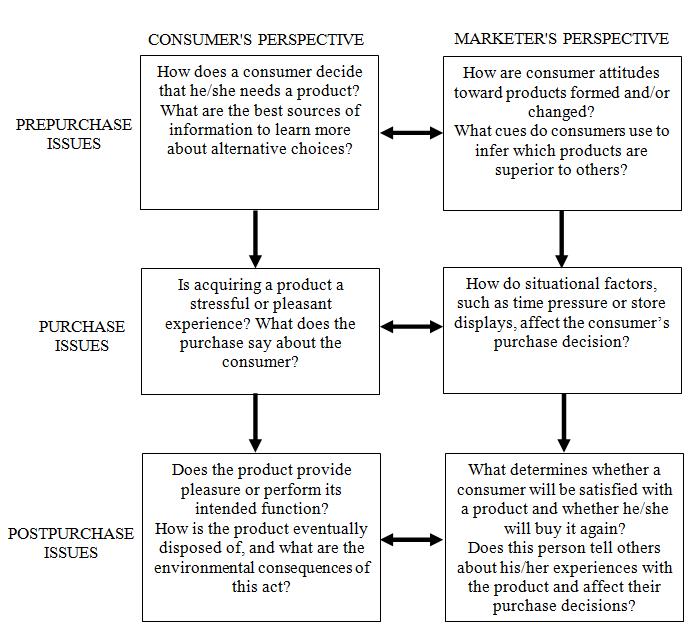Pricing is a key factor in business innovation. Strategic pricing involves aligning the pricing strategy with corporate strategy. The price must be chosen carefully after considering various scenarios and possible implications. Is the price attractive enough to capture the mass of target buyers? Can the company make the offering at the target cost and still earn a healthy profit margin? Can the company profit at a price that is affordable to the target buyers? Strategic pricing is a key component of Blue Ocean Strategy pioneered by Chan Kim and Renee Mauborgne. To have strong revenue flowing, the strategic price must be set. This procedure will ensure that consumers will want to buy and will have the compelling ability to achieveContinue reading
Marketing Techniques
Solomon Model of Comparison Process – Model of Consumer Behavior
Solomon Model of Comparison Process explains some of the issues that are addressed during each stage of the consumption process (Prepurchase issues, Purchase issues, Postpurchase Issues). The ‘exchange’, in which two or more organizations or people give and receive something of value, is an integral part of marketing. He also suggested that consumer behavior involves many different actors. The purchaser and user of a product might not be the same person. People may also act as influences on the buying processes. Organizations can also be involved in the buying process. Much of marketing activity, they suggest, concentrates on adapting product offerings to particular circumstances of target segment needs and wants. It is also common to stimulate anContinue reading
Marketing Planning – Strategic Planning in Marketing
Businesses that succeed do so by creating and keeping customers. They do this by providing better value for the customer than the competition. Marketing management constantly have to assess which customers they are trying to reach and how they can design products and services that provide better value (“competitive advantage”). The main problem with this process is that the “environment” in which businesses operate is constantly changing. So a business must adapt to reflect changes in the environment and make decisions about how to change the marketing mix in order to succeed. This process of adapting and decision making is known as marketing planning. So, marketing planning is a plan involves designing activities relating to marketing objectives and attach withContinue reading
Geographical Pricing
Geographical pricing refers to the location at which the price is applicable. Geographical pricing strategy is influenced by a number of factors such as the location of the company’s plant, the location of the competitors’ plants and their pricing strategies, dispersion of customers, extent of transport costs, demand and supply conditions and competitive environment. In geographical pricing, there are generally two methods of price basis which are stated in the offers or quotations submitted by a seller to a buyer. These are: Ex-Factory: “Ex-factory” means the prices prevailing at the factory gate. When a seller quotes to a buyer “ex-factory price’, it means that the freight and transit insurance costs are to the buyer’s account. In other words, the sellerContinue reading
Personal Selling in Industrial Marketing
Personal selling is one of the oldest forms of promotion. It involves the use of a sales force who orally communicates about the company’s products or services to the potential buyers with an intention to make a sale. Personal selling is the primary demand stimulating force in the industrial marketer’s promotional mix. Its role is very dominant in industrial markets because of less number of potential customers present compared to the consumer markets and the large amount of money purchases involved. As the cost per sale through personal selling is too high, industrial marketers have to carefully manage and integrate personal selling into organization’s marketing mix. This will also lead to maximize its effectiveness and efficiency. The job of personalContinue reading
Case Study: Coffee Cafe Business in India
Starbucks started in Seattle in 1970 as a gourmet coffee retailer, selling fresh ground coffee beans to local coffee lovers. Starbucks CEO, Howard Schultz spotted an unfulfilled market need for cafes serving gourmet coffee directly to consumers. This proved to be a sound market penetration strategy and led to a large loyal consumer base. Read: Case Study of Starbucks: An Amazing Business Success Story Entrepreneurs in India discovered the romance of coffee at Starbucks and a few coffee chains, such as Barista, Cafe Coffee Day, and Qwiky’s have sprung up in metro cities. People of all age groups are extending enthusiastic welcome to this new entrant and drinking coffee like never before. Coffee lovers have always been lyrical about theContinue reading


